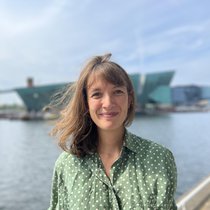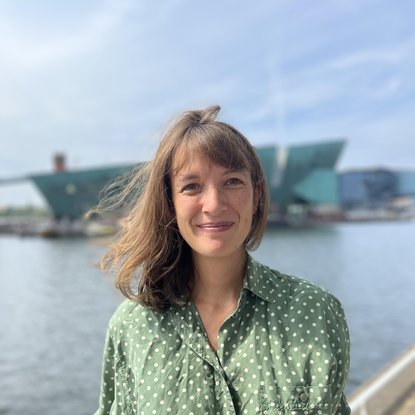Frictions often occur amongst residents when homeowners' associations or VvEs (Vereniging van Eigenaren) try to negotiate joint investments for energy-saving in their buildings. Each resident has their own interests, preferences, and financial resources, making initiatives often fragmented and therefore less effective.
Together with Superworld, an Architecture and Strategic Design practice, AMS Institute set up a research project prototyping new methods for a more inclusive energy retrofitting process within VvEs in the context of heritage buildings. This one-year exploratory research was funded by NWO and brought together AMS Institute, Superworld, and TU Delft (Climate Design and Sustainability), while partnering with Gemeente Amsterdam and Stichting WOON.
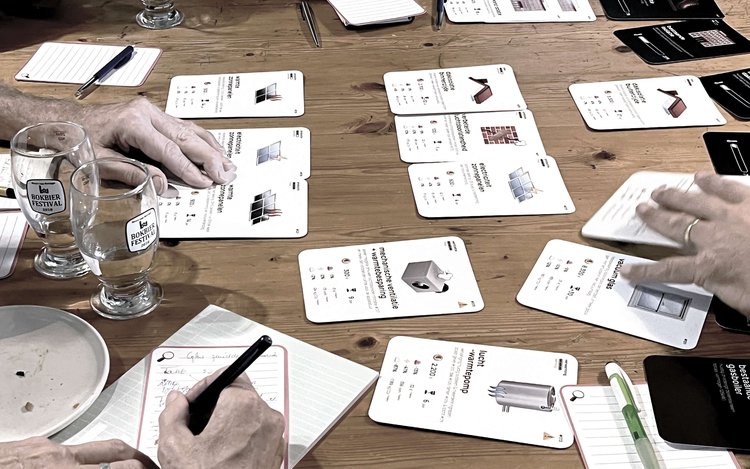
Background of the project
Large-scale retrofitting activities are urgently needed to reach climate targets, but the decision-making of retrofitting in buildings with shared and mixed ownership is challenging. Each owner is accountable for his own energy bill and ecological footprint, resulting in a limited collective action scope. With millions of homes under associations of co-owners nationwide, collective decision-making for energy retrofitting becomes increasingly challenging, as individual choices do typically not included collective building elements like roofs, floors, and facades. Heritage buildings are particularly intricate due to monumental restrictions and a lack of standardized retrofitting approaches. The project aim is to achieve a greater chance of success in making co-owned heritage buildings more sustainable while considering the significance of cultural heritage.
“Retrofitting of shared properties is a material intervention that is guided by immaterialities like negotiations, trust, finances, or knowledge. These conversations require a mutually understood medium connecting the individual agency to the collective resource that is energy.”
Superworld
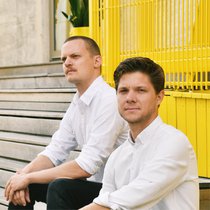
The project addresses the pressing questions of unlocking the potential of collective retrofitting at scale for heritage buildings and designing a collective decision-making process for energy as a common resource. The research is based on two existing buildings in Amsterdam city center and involved residents and homeowners in the process of developing and evaluating retrofitting ‘what-if’ scenarios, using innovative parametric modelling. In the playful form of a physical card game, results of the digital energy modeling were translated into something accessible and understandable for citizens. The group could quickly form preferred retrofitting scenarios, get direct feedback from the model on the impact of their scenarios in terms of energy, CO2, and cost savings, and further decide and negotiate.
After a year of research, we are excited about the possibilities it presents for encouraging the adoption of energy efficiency measures by small to medium size VvEs. Both cases delivered tangible investment analysis, detailing a decarbonization strategy of the building blocks and operationalizing a retrofitting analysis tool scalable for Amsterdam’s entire residential historic building stock. Participant feedback indicates that the approach enabled a shared understanding of the feasible options and associated impacts to make their building more sustainable, thus empowering the group to make informed choices for future energy retrofit investments. The team is currently inventorying new paths to learn how parametric modelling can be used as a step-by-step approach for large scale implementation for decision making in the built environment.
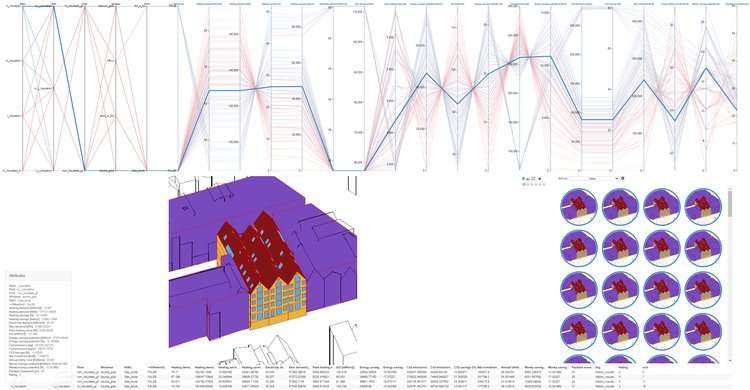
The parametric model
BEHAVE 2023
Last month, during BEHAVE 2023, research fellow Maéva Dang gave a presentation about the research, named "Collect your Retrofits: Parametric modelling to support homeowner energy retrofits in heritage buildings at the early design stage". BEHAVE was the the 7th edition of the biannual EnR event focusing on the application of behavioural insights in energy efficiency and climate mitigation. It was an opportuninty to receive feedback on the approach from a multidisciplinary audience, with many interesting questions regarding future testing of de model. You can find the research paper published in the proceedings of Behave here.
“I liked how the approach helped structuring an exploration process that is typically messy within VvEs. It also made sure that all important information and preferences are discussed from the beginning, encouraging conversations about sustainable retrofitting in heritage buildings that might not happen otherwise.”
Maéva Dang
Research Engineer
